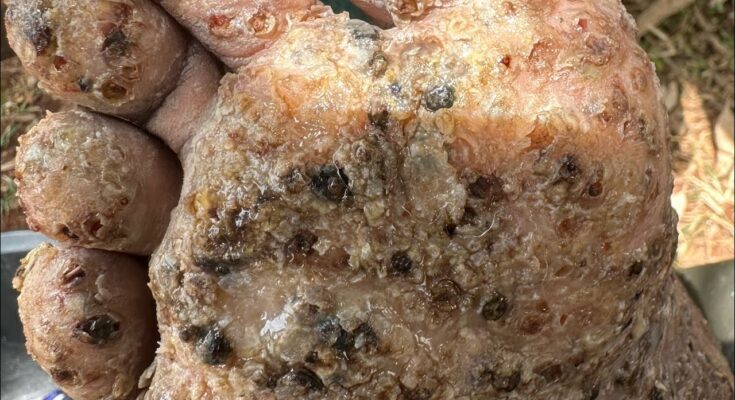The Treatment of People Affected by Jigger Digging: Healing Tungiasis with Care and Dignity
Jigger digging refers to the manual removal of jigger fleas (Tunga penetrans) from human skin—a painful but necessary procedure for those suffering from tungiasis. This parasitic condition is common in impoverished regions of Sub-Saharan Africa, where jiggers burrow into the skin, causing swelling, infection, and disability. Treatment is both a medical and humanitarian effort, aimed at restoring health, mobility, and dignity.
🦟 What Happens During Infestation?
Jigger fleas burrow into the skin—usually on the feet, toes, or hands—where the female lays eggs. The embedded flea causes:
- Painful inflammation and itching
- Ulceration and open sores
- Difficulty walking or using affected limbs
- Risk of secondary infections like tetanus, gangrene, or sepsis
In severe cases, hundreds of fleas may infest a single foot, leading to disfigurement and social isolation.
🛠️ The Jigger Digging Process
Treatment begins with careful removal of the embedded fleas. This process includes:
- Cleaning the affected area with antiseptic soap or alcohol
- Using sterile tools (scalpels, tweezers, or needles) to expose and extract the flea
- Removing the entire parasite, including its egg sac, to prevent recurrence
- Disinfecting the wound and applying sterile dressings
- Monitoring for infection and administering antibiotics if needed
In many rural areas, jigger digging is done without anesthesia, making the procedure painful. However, trained caregivers and medical volunteers aim to minimize discomfort and ensure safety.
💔 Social and Emotional Impact
Victims of jigger infestation often suffer silently due to:
- Stigma and ridicule from their communities
- School absenteeism among children
- Emotional trauma and depression
- Misconceptions linking jiggers to curses or poor hygiene
Treatment is not just physical—it’s emotional. Many patients cry with relief after removal, regaining their ability to walk, work, and socialize.
🩺 Medical and Community Support
Organizations like Rise Up Society and Kinship United provide:
- Safe jigger removal services
- Hygiene kits and closed footwear
- Education on prevention and early detection
- Emotional support and follow-up care
The World Health Organization recommends a “One Health” approach, treating both humans and animals, sealing earthen floors, and improving sanitation to break the cycle of infestation.
🛡️ Prevention Strategies
To prevent jigger infestation:
- Wear closed shoes, especially in dusty environments
- Wash feet daily with soap and water
- Improve housing with cement floors
- Treat pets and livestock that may carry fleas
- Educate communities to reduce stigma and encourage early treatment



